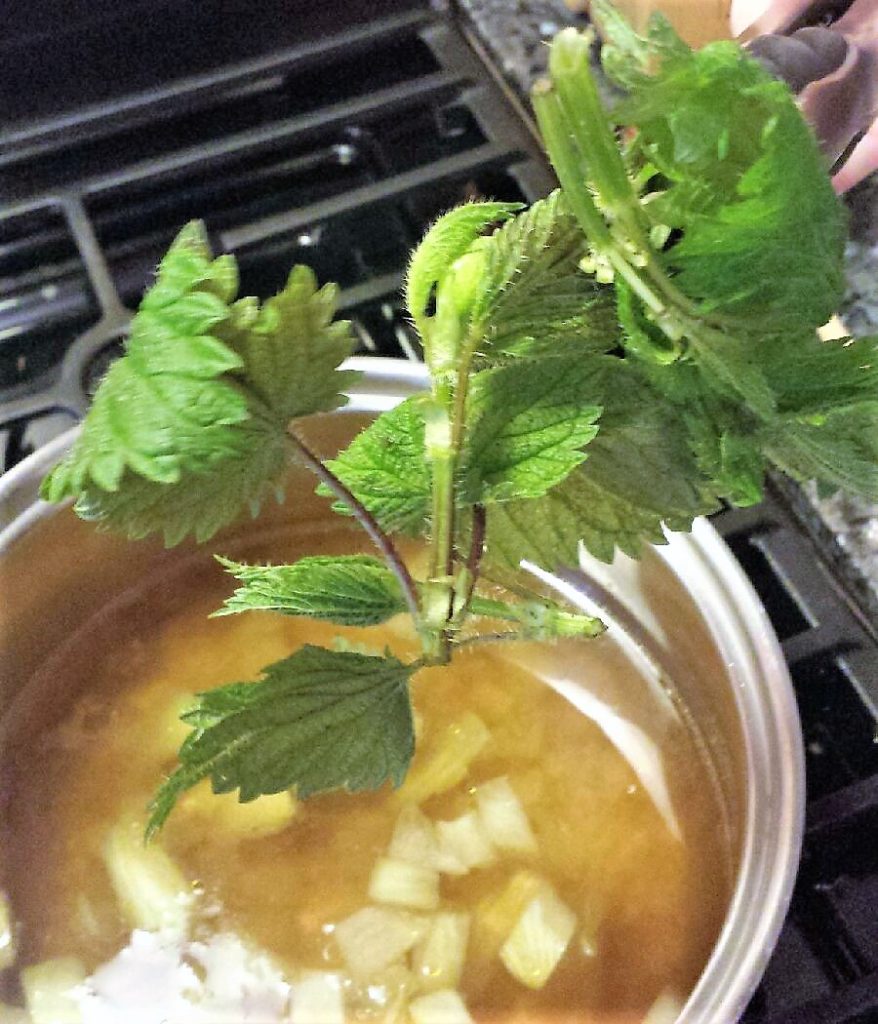When I was 12, our family moved to Seattle from Miami. Unlike tropical islands like Hawai’i, the subtropics of South Florida – at least in the 1970s – were teeming with insects and amphibians ready to sting or poison you. I encountered poisonous toads and snakes in our yard, gigantic cockroaches in the laundry room, and Venus flytraps in the family room. (It was fun to trick them into snapping shut, but they were almost always digesting a fly – ugh.) Looking back, it’s hard to believe I still ran around barefoot.
When we moved to Seattle, we were told there were slugs, but no bugs. It was only a slight improvement. But at least there was nothing that could actually hurt me. Or so I thought until the neighbor kids introduced me to stinging nettle.

It’s not what you think. We had very nice neighbors – which made me instantly suspicious because another huge difference between Miami and Seattle was that complete strangers in Seattle would smile or nod at you in passing while we were taught to not even LOOK at strangers in Miami (a good survival tactic).
When the kids next door tried to warn me about stinging nettle, I thought they were pulling my leg and I wanted to call their bluff. So I stuck my hand right into the nettles. Their eyes widened in disbelief even before mine did. Several seconds later, the welts appeared and the prickly stinging started. Dumb nice neighbor kids.
It had been decades since I willingly wandered into a stinging nettle patch. But that is exactly what I found myself doing three years ago for my ethnobotany apprenticeship. Stinging nettle (Urtica dioica) is an amazing plant that has edible, medicinal, and utilitarian uses. As a food, it is a veritable powerhouse. It is high in iron, calcium, magnesium, B complex, and Vitamins C, D and K. It is also packed with protein. No wonder native peoples celebrated its return every spring!
Nettle also is rejuvenating for the chronically ill or elderly. It helps to cleanse and discharge the byproducts of metabolism. It is a diuretic and aids the lymphatic system. It is also good for lung conditions: hay fever, allergies, bronchitis, asthma. My teacher Karen Sherwood shared an amazing story about one of her students using nettle steam and moxibustion to successfully treat an acute asthma attack within minutes.
Simmering nettle with horsetail and rosemary makes a wonderful hair rinse. Nettle can also be used as a compress for wounds, cuts, stings (ironically!), and burns. Karen shared her experience of watching elderly European women wander into a nettle patch for “urtication” (from the botanical name Urtica dioica). They deliberately placed their arthritic hands into the nettles, using this regular ritual to lessen their pain and symptoms.
In the Pacific Northwest, it was the main fiber plant on the coast used for making cordage and nets. Europeans spun it into cloth and also made it into paper. Its roots can also be used to make a yellow dye.
Stinging nettle is harvested when its leaves are fresh and young. Nettle is the herald of spring that tells you to go out and start foraging! Don’t wait too long if you want to pick your own. It’s not good to use the leaves for food after the plant blooms as it can irritate the kidneys.
So how do you pick (much less, eat!) nettle without getting stung? The stinging is caused by two things: formic acid and the small hairs that are the conduits for the acid. If you even lightly brush up against a single hair, you’ll be stung – and you might not notice it right away (I always did). But once you do, it will sting and prickle for about a day. (My stings from class lasted closer to 27 hours. And yes, I counted.) If you crush or coat the hairs with oil, the nettle can’t sting you. Cooking or drying nettle also destroys the hairs (but not juicing!).
I must say that picking the nettle bare-handed and eating it raw for the first time was a lesson in courage. Supposedly, if you pinch the top of a leaf off a stem, you can avoid the stinging hairs. That only worked once for me – there are fewer hairs on the top of the leaves, not no hairs. Once you pick the leaf, carefully fold it several times (top of leaf over underside of leaf) to securely cover the stingers. Place the wadded leaf in the back of your mouth by your molars, then chomp that sucker up in one place until it’s completely chewed before swallowing. Fortunately, I only stung my fingers and not my insides. That’s survival information that’s good to know, but I’ll be saving it for when it’s needed rather than risking a sting-y trailside snack.
For the less intrepid nettle-curious, nettle is also good dried. You can use dried nettles in a tea (good for allergies), an infusion (“tea” that is steeped at least four hours – good for the adrenal and hormonal systems), or as a kitchen herb like basil or thyme.
My first attempt at cooking with fresh nettle was to substitute it for spinach in a lemon chicken soup recipe. It had excellent flavor, but it was still a little unnerving to feel the (non-stinging) hairs that were still there.

You can use fresh nettle anywhere you would use fresh spinach – in soups, quiche, lasagna, even on pizza! And if a nettle salad with warm bacon dressing sounds like your thing, just be sure the leaves are completely coated in dressing. Otherwise, your salad will be the talk of the town – but not for the reasons you’d like!
